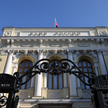Due to the amount of foreign investment, Poland was ranked the fifth destination in Europe, with the growth pace second only to Hungary – the report of Financial Times-owned analytical company fDi Intelligence shows.
Last year, Poland’s contribution in the total amount of foreign investment in Europe grew by 6% versus 3% increase in 2015. This means that in 2016 Poland’s position in the investment ranking was higher than the size of our economy could suggest - Poland generates about 3% of European GDP. Turkey and Spain, with considerably larger economies, recorded slower capital inflows, at $8.8 billion and $8.5 billion, respectively.
According to UNCTAD data, in 2016 companies invested abroad $1,670 billion, by 13% less than a year earlier. The biggest decline in foreign investments, by 26%, was recorded in Europe. However, UNCTAD takes into account all so-called foreign direct investments (FDI), while fDi Intelligence statistics, available to Rzeczpospolita, relate only to these FDIs that generate new jobs and new output capacity. Globally, the last year’s value of such investments stood at $776.2 billion, the highest since 2011. As compared to 2015, the value increased by 6% and created two million jobs. “It seems that the last year’s drop in FDIs (as defined by UNCTAD) could be explained by lower corporate activity in terms of foreign mergers and takeovers,” fDi Intelligence analysts say.
When it comes to attracting foreign investment, the UK remains the European leader. Last year, foreign companies invested there $34.8 billion. However, Britons’ decision to leave the European Union has already left its mark. Over one year the value of FDIs – as defined by fDi Intelligence – declined by 42%. Germany also saw lower investment (26% fall) – in 2016 the country attracted $10.3 billion, not much more than Poland. Among EU countries, except for Poland and Hungary, only France could boast an impressive growth in foreign investment (54% increase). However, in terms of investment spending (at $13 billion), France remains far behind the UK.
The jump growth in FDIs in Poland seems to contradict a popular thesis suggesting that the last year’s investment slowdown resulted from rising uncertainty related to taxes, legal regulations and Warsaw-Brussels relations. „Greenfield projects do not emerge every year. The decision-making process takes a long time and has to be preceded with a detailed feasibility study. Also, the businesses have to find financing for the project and it is time-consuming as well,” says Jarosław Janecki, chief economist at Societe Generale in Poland. „Investment decisions made by global corporations are parts of their strategy which shouldn’t be changed due to higher political uncertainty in a particular year. Here, bottom line wins,” he adds.
























